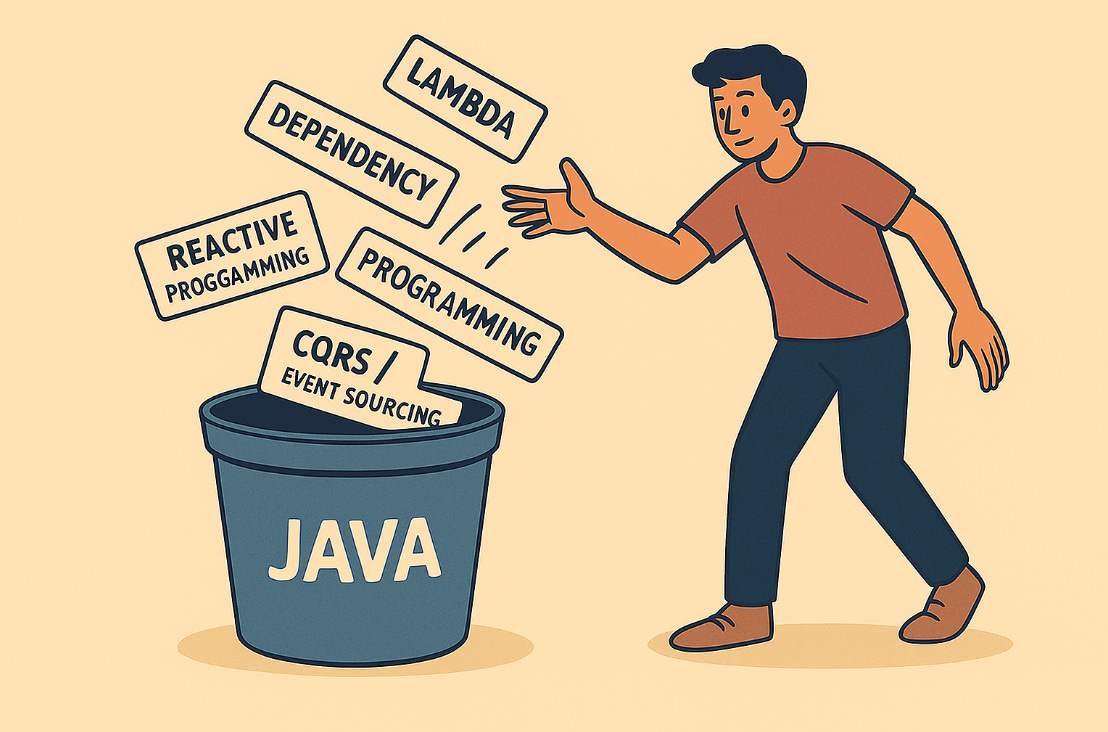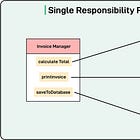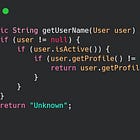Stop Using Outdated Design Patterns — Modern Alternatives to Classic Solutions
Coding best practices for developers
After coding in Java for more than 15 years, I’ve seen design patterns go from revolutionary to routine — and in some cases, to downright obsolete.
When Design Patterns: Elements of Reusable Object-Oriented Software (the “Gang of Four” book) came out in 1994, it gave developers a shared vocabulary. We finally had a structured way to solve recurring software problems: Singleton, Factory, Observer, Adapter, the list was pure gold.
But here’s the truth: many of those patterns were designed to solve problems that no longer exist in modern programming languages or frameworks.
Java, Kotlin, and even frameworks like Spring Boot, Micronaut, and Quarkus have evolved to the point where some patterns are unnecessary — or worse, counterproductive.
In this post, I’ll highlight a few outdated design patterns, their modern alternatives, and how modern tools (like CodeRabbit, an AI-powered code review assistant) can help you identify legacy anti-patterns in your codebase and refactor them intelligently.
1. Singleton Pattern → Dependency Injection (DI) Frameworks
The Singleton pattern used to be the go-to for ensuring a single instance of a class. We used it for database connections, configuration objects, or logging utilities.
But today, that approach is almost always a code smell.
Singletons introduce hidden dependencies, make testing harder, and couple your codebase tightly around global state.
✅ Modern Alternative: Dependency Injection
Frameworks like Spring, Guice, and Jakarta CDI have made singletons obsolete by introducing Dependency Injection (DI) and Inversion of Control (IoC).
Instead of hardcoding single-instance logic, DI frameworks manage object lifecycles for you. You can scope objects as singletons when needed — but within a clean, testable, and configurable context.
@Component
@Scope(”singleton”)
public class ConfigService {
// Handled by Spring — no need for manual Singleton logic
}
Why it’s better: You get the same benefits (single shared instance) without global state or boilerplate code.
Pro tip: If you’re still maintaining old Singleton classes, tools like CodeRabbit can automatically flag them during pull requests and suggest refactoring options using annotations like @Component or @Bean.
2. Factory Pattern → Modern Language Features (Lambdas, Records, and Sealed Classes)
The Factory pattern solved object creation complexity back when Java lacked expressive language features.
But since Java 8+, we’ve gained lambdas, method references, and now records and sealed classes — which make factories redundant in many cases.
✅ Modern Alternative: Functional Constructors or Records
Instead of maintaining verbose factory hierarchies, you can use static factory methods, builders, or even records for concise object creation.
public record User(String name, String email) {
public static User from(String csv) {
String[] data = csv.split(”,”);
return new User(data[0], data[1]);
}
}
This pattern is self-documenting, immutable, and compact.
Why it’s better: Fewer classes, cleaner initialization, and built-in immutability — without losing flexibility.
3. Observer Pattern → Reactive Programming
The Observer pattern once helped us handle event-driven systems. Think: GUI listeners, pub-sub systems, or callbacks.
But manual observer management is verbose and error-prone. It doesn’t handle backpressure, asynchronous events, or stream composition well.
✅ Modern Alternative: Reactive Streams / Project Reactor
Reactive frameworks like Project Reactor, RxJava, and Mutiny abstract away the boilerplate of manual observers.
You can compose asynchronous event pipelines elegantly:
Flux<String> stream = Flux.just(”event1”, “event2”, “event3”)
.map(String::toUpperCase)
.filter(e -> e.startsWith(”E”))
.subscribe(System.out::println);
Why it’s better:
Reactive streams handle concurrency, ordering, and error propagation automatically — far beyond what a hand-coded observer system could.
Bonus: CodeRabbit can analyze your reactive streams and point out potential blocking calls, thread leaks, or anti-patterns — helping you scale safely.
4. Command Pattern → REST APIs, CQRS, and Event Sourcing
The Command pattern encapsulated actions as objects. It made sense when applications were monolithic and command invocation needed abstraction.
But in today’s distributed systems, commands are often represented as API calls, events, or messages — not Java objects.
✅ Modern Alternative: CQRS and Event-Driven Architecture
Modern architectures embrace Command Query Responsibility Segregation (CQRS) — separating reads and writes — and event-driven systems using Kafka or RabbitMQ.
record CreateOrderCommand(String orderId, BigDecimal total) {}
record OrderCreatedEvent(String orderId) {}
Instead of invoking command.execute(), your service publishes an event — decoupling intent from execution.
Why it’s better: It scales naturally, supports replayability, and enables real-time analytics.
5. Strategy Pattern → Lambdas and Polymorphic Switch Expressions
In older Java, the Strategy pattern required defining interfaces and multiple strategy classes. It was flexible but extremely verbose.
✅ Modern Alternative: Lambdas and Switch Expressions
With Java 14+, switch expressions and functional interfaces have made strategies concise:
Function<Double, Double> taxStrategy =
switch (region) {
case “US” -> amount -> amount * 0.07;
case “EU” -> amount -> amount * 0.20;
default -> amount -> amount;
};
No need for multiple subclasses — strategies can now be expressed inline and composed dynamically.
Why it’s better: Fewer classes, simpler testing, and higher readability.
How to Identify Outdated Patterns in Legacy Code?
If you’ve worked on Java systems for over a decade, chances are your codebase still has some of these old design patterns baked in. They’re not wrong, but they can slow down progress, increase complexity, and make onboarding new developers harder.
Modern tools like CodeRabbit — an AI-powered code review assistant — can make refactoring significantly easier.
It automatically reviews pull requests, identifies outdated design patterns or anti-patterns (like manual Singletons or verbose Factories), and suggests modern, framework-compatible alternatives.
Instead of relying on static linting tools, CodeRabbit uses AI to understand context — which is exactly what you need when modernizing a legacy system.
Final Thoughts
Design patterns were never meant to be static — they evolve as languages and frameworks mature.
The best engineers don’t just follow design patterns; they know when to let them go. What was once clever may now be clutter.
If you’re maintaining enterprise Java systems or migrating to modern architectures, start by rethinking your patterns. Refactor them to align with today’s language capabilities and cloud-native principles.
And while you’re at it, let CodeRabbit help you along the way — it’s like having a senior engineer reviewing your code 24/7, spotting outdated patterns before they become technical debt.
Other Coding and System Design Articles you may like







I checked the post with It's AI detector and it shows that it's 83% generated!